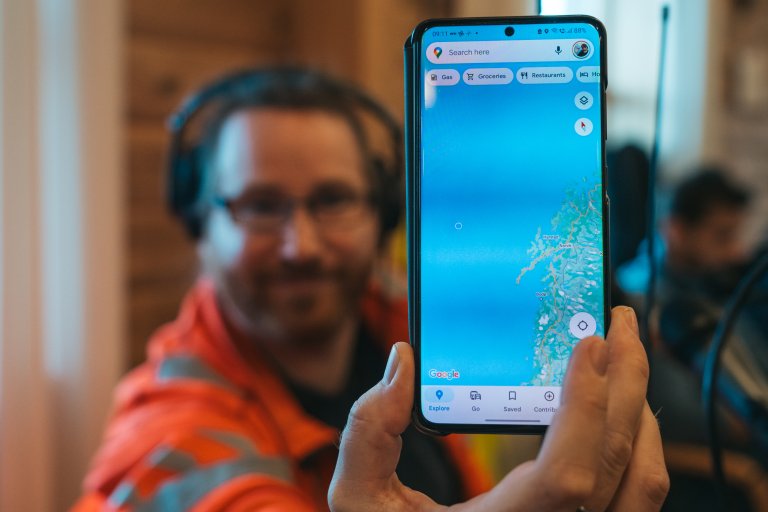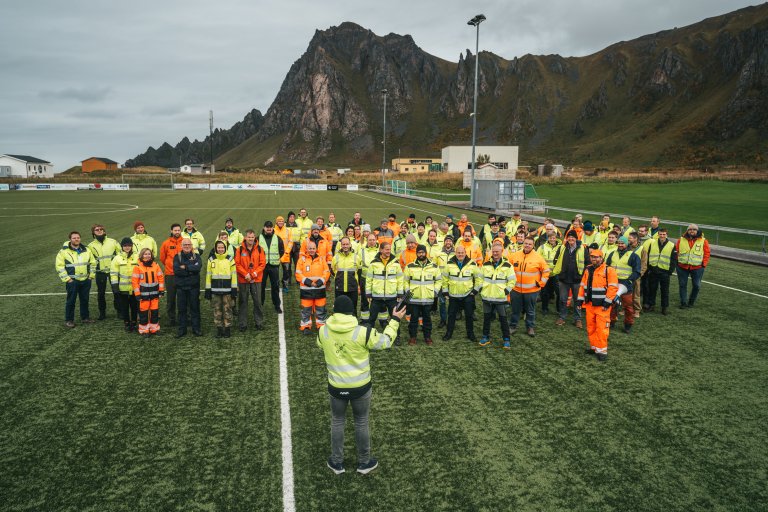Jamming – a technological cat-and-mouse game
In Russia, most mobile base stations are equipped with jamming equipment. Norwegian authorities could learn from this, says FFI researcher Anders Rødningsby. September 9-13th the world’s largest open jamming test was conducted at Andøya.

Imagine driving on Smøla, an island off the coast of Western Norway, on a Friday evening. Suddenly, the GPS in your car informs you that you are in Haparanda on the border between Sweden and Finland, and it’s Monday morning.
This could be the result if someone tampers with the satellite signal where you are.
The example above is harmless enough, but the consequences of such events can be serious.
The critical satellite signals
Most people have phone apps that use satellite signals to obtain position or time. Without a GPS signal, you wouldn’t be able to log your run in your fitness app (oh no!).
Less known, perhaps, are the many critical societal functions that also depend on satellite signals to function properly. Banking services, power genreation and distribution, communication services, and transport all use satellite signals to synchronize timed services or for positioning.
Therefore, it’s serious if someone intentionally disrupts (jams) the satellite signals.
Entire airports have been knocked out by small jammers. There are examples where rescue helicopters have been unable to land due to signal interference.
In Norway’s northernmost county of Finnmark, close to the Russian border, loss of GNSS signals due to jamming occurs nearly daily. The Norwegian Communications Authority (Nkom) has been recording such incidents since 2017. The number of disruptions has increased significantly since Russia’s invasion of Ukraine in 2022.
In September 90 different organisations and technology companies from more than 20 countries gathered at Jammertest 2024 at Andøya to test their equipment. Their aim was to find vulnerabilities and weaknesses so that companies can build more robust systems.

GNSS data on position and time is often a small piece in a large and complex system. If information about time and location is disrupted or disappears, it can cause additional errors down the line. These errors can make equipment behave in a way that is often strange and difficult to predict,’ says FFI researcher Anders Rødningsby.
‘We have to test in real situations to uncover vulnerabilities so that we can find countermeasures.’
During the jammertest, FFI’s task is to transmit the jamming signals. In other words, we are the ‘bad guys’ during the exercise.
‘Villain’s tool’
But who are the ones actually doing the jamming? In the civilian sector, it’s well known that trucks jam their own GNSS receivers to trick driving/rest systems that register when trucks are moving. In 2019, two truck drivers attempting to jam themselves were caught because they simultaneously interfered with the air ambulance during its approach to Akershus University Hospital.
Jammers can also be used to conceal criminal activities, such as transporting stolen goods.
Using such jammers is illegal. Nkom regulates who is allowed to transmit on which frequencies. Once, they uncovered stolen goods because someone left a jammer on for too long.
Electronic warfare
In the military, the use is far more widespread. Jamming is an essential part of what is called electromagnetic warfare (EW).
Military forces jam to achieve so-called PNT superiority. PNT is an abbreviation meaning positioning, navigation, and timing.
In military operations, knowing your location and the time is a significant advantage for synchronising attacks or weapons and using sensors, surveillance, and communication systems. Having better location and time data than your enemy is a clear advantage.
However, an equally important reason to jam is to protect your own systems, critical infrastructure, and personnel.

‘We don’t want to be hit by GNSS-guided bombs or drones. Jamming the navigation is a simpler and cheaper countermeasure than shooting them down,’ says Rødningsby.
‘In Russia, nearly all base stations – there are 250,000 of them – can jam. They can carpet jam their own country if GPS-guided missiles or drones come in. It’s an important protective measure against incoming threats. We may have something to learn here,’ says Rødningsby.
How do we jam?
The simplest way to jam is to just send out a lot of noise on the frequency bands you want to take out. GNSS jamming sends noise on the same frequencies that satellites use.
‘Those of us working on this talk about GNSS interference instead of jamming. If the interference is intentional, someone is deliberately carrying out an action. If the interference is unintentional, you are still disturbed, and it’s important to think about how to handle it. It could be due to faulty electronic equipment or solar activity.’
Intentional GNSS interference is divided into jamming, spoofing, and meaconing.
- Jamming: Transmitting radio noise on the same frequencies as satellites or communication equipment. This can be done more or less cleverly, for example, by adjusting bandwidth or power.
- Spoofing: Transmitting computer-generated signals that resemble those from real satellites, making your GNSS receiver suddenly think it’s in a different location and at a different time.
- Meaconing: Receiving real satellite signals at one location and retransmitting them at a different time and place. This results in a spoofing effect – for example, all receivers within an area believe they are in the same location as the receiving antenna of the meaconing system.

‘How do you protect yourself from jamming?’
‘It’s about making the equipment more robust. We believe in anti-jamming antennas that can nullify or significantly reduce the effect of a jammer. We are currently working to secure funds to test more of these for use in the military,’ says Rødningsby.
Another protective mechanism is to have backup systems that can help with navigation when you lose time and location from GNSS. These could be external clocks and inertial navigation.
‘There are sensors that record how you move (speed and direction). If you know where you were when the GNSS signals disappeared, you can use inertial navigation to calculate where you are right now.’
‘Why is Russia jamming Norwegian civilian airspace during peacetime?’
‘It’s hard to say. Perhaps to flex their muscles. Perhaps to show that they can. It could also be to protect their installations. Some believe they’re training their own forces to make them more robust against jamming. The question is why they sometimes jam GPS specifically and not their own system, GLONASS.’
‘Are we prepared for the threats we face from GNSS jamming?’
‘We are aware of the dangers, but we may have been a bit complacent. We know that Russian actors have made a significant effort in the EW field, specifically in GNSS interference. They are good at it. Therefore, it’s important that we start taking this seriously.’
‘What else do you do when you’re not participating in this jamming test?’
‘We monitor the technology. What countermeasures can we use? How can we jam an enemy? When we improve countermeasures, we also gain knowledge about how we can attack. It’s like a cat-and-mouse game. It’s important to be the one leading in this race.
The most important task ahead is to secure funding for a project on anti-jamming antennas. Otherwise, knowledge dissemination is an important task,’ says Rødningsby.
‘We’ve gotten very good at cooperating between agencies on the jamming issue. What we want now is to raise this to a higher government level. That politicians and other societal leaders understand that this is a challenge we must take seriously.’


.png.jpg?quality=80)